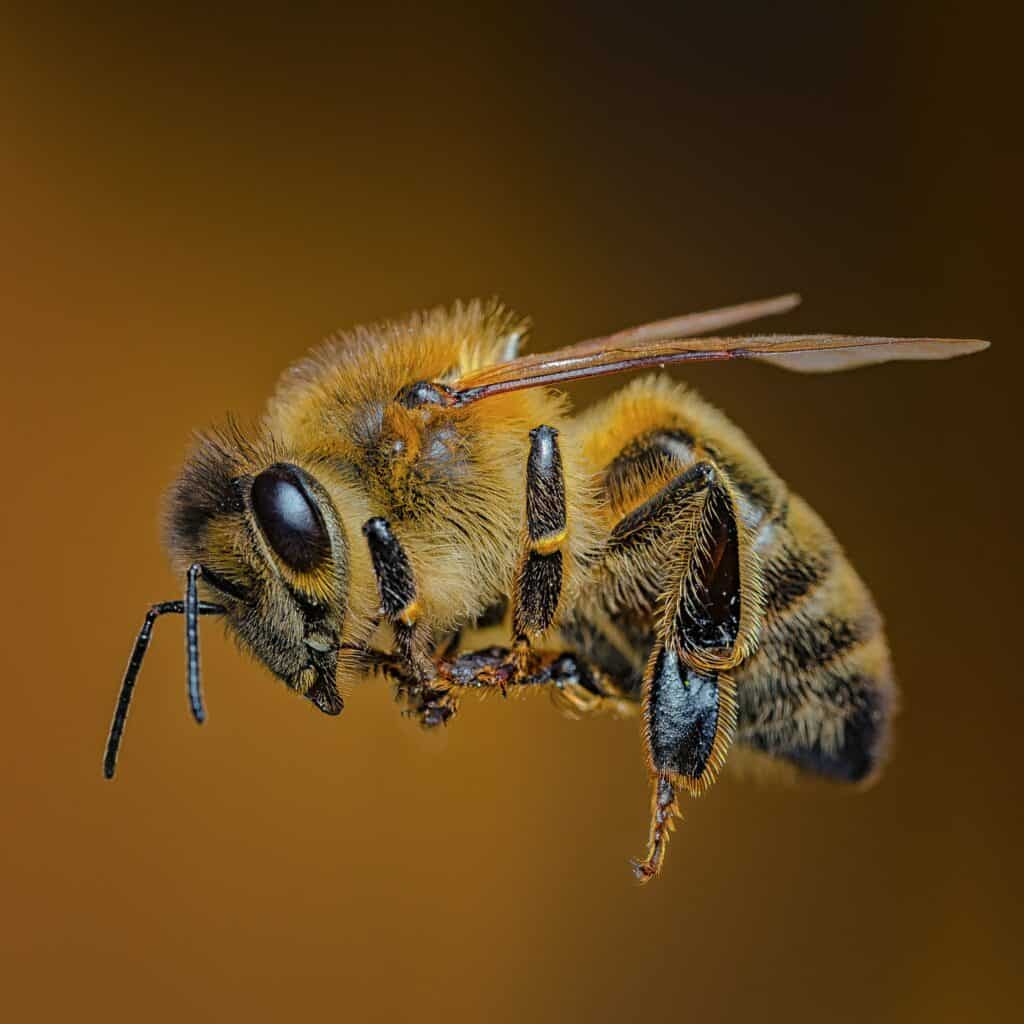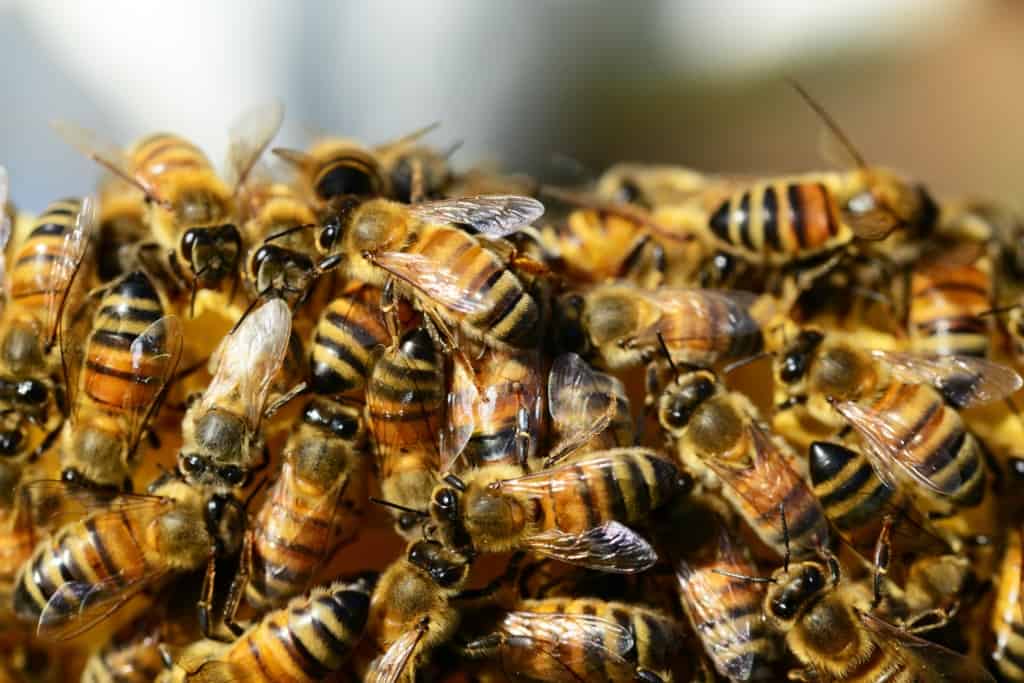
Introduction:
Honey has been used for medicinal purposes for thousands of years. In recent years, there has been a renewed interest in the medicinal properties of honey, particularly in Manuka honey. It is important to purchase authentic Australian Manuka honey by looking for the AMHA certification mark and an MGO rating that signifies the honey’s quality and health benefits. Manuka honey is a monofloral honey that is produced by bees that feed on the flowers of the Manuka tree (Leptospermum scoparium), which is native to New Zealand and parts of Australia. Manuka honey is known for its unique properties, including its antibacterial and anti-inflammatory effects, making it a popular choice for wound care and other therapeutic applications. This paper will review the chemical composition, health benefits, and therapeutic applications of Manuka honey.

What is Manuka Honey?
Manuka honey is a distinctive type of monofloral honey produced by bees that pollinate the Manuka bush (Leptospermum scoparium), which is native to New Zealand and parts of Australia. This honey is celebrated for its unique antibacterial properties, primarily due to the presence of methylglyoxal (MGO). MGO is formed in the honey through the natural conversion of dihydroxyacetone (DHA), a compound found in the nectar of Manuka flowers.
The quality and potency of Manuka honey are measured using the Unique Manuka Factor (UMF) rating system. This system assesses the concentration of MGO and DHA, with higher UMF ratings indicating stronger antibacterial properties. This makes Manuka honey not only a delicious natural sweetener but also a powerful therapeutic agent.
Chemical Composition of Manuka Honey:
Manuka honey has a unique chemical composition that distinguishes it from other types of honey. It contains a range of bioactive compounds, including phenolic acids, flavonoids, enzymes, and proteins. The following are some of the key compounds found in Manuka honey:
Unique Manuka Factor (UMF):
UMF is a rating system used to measure the antibacterial activity of Manuka honey. It is based on the concentration of methylglyoxal (MGO) and other compounds in the honey. The higher the UMF rating, the higher the antibacterial activity of the honey. (1)
Methylglyoxal (MGO):
MGO is a natural compound found in high concentrations in Manuka honey. It is responsible for the antibacterial activity of the honey and is believed to be the main factor that contributes to its therapeutic properties. (2)
Leptosperin:
Leptosperin is a phenolic compound that is found exclusively in Manuka honey. It is used as a marker to authenticate the authenticity of Manuka honey. (3)
Dihydroxyacetone (DHA):
DHA is a naturally occurring compound found in the nectar of the Manuka tree. It is converted into MGO during the honey-making process. (4)

HoneyBee
Antibacterial Properties and Health Benefits of Manuka Honey:
The unique properties of Manuka honey make it a popular choice for a range of health benefits. The following are some of the key health benefits of Manuka honey:
Antimicrobial Properties:
Manuka honey has potent antimicrobial properties that make it effective against a wide range of bacteria, including antibiotic-resistant strains. (5)
Wound Healing:
Manuka honey has been shown to promote wound healing and reduce inflammation, making it an effective treatment for burns, ulcers, and other types of wounds. (6)
Digestive Health:
Manuka honey has been shown to be effective in treating gastrointestinal disorders, such as peptic ulcers, gastroenteritis, and inflammatory bowel disease. (7)
Anti-inflammatory Effects:
Manuka honey has anti-inflammatory effects, making it effective in treating a range of inflammatory conditions, including arthritis, asthma, and allergies. (8)
Antioxidant Properties:
Manuka honey is rich in antioxidants, which can help to protect the body against oxidative stress and prevent the development of chronic diseases. (9)
Therapeutic Applications:
Manuka honey is used for a range of therapeutic applications, including the following:
Treatment of Skin Conditions:
Manuka honey is used to treat a range of skin conditions, including burns, ulcers, acne, and eczema. (10)
Respiratory Health:
Manuka honey is effective in treating respiratory conditions, such as colds, flu, and sinusitis. (11)
Oral Health:
Manuka honey has been shown to be effective in treating oral health conditions, such as gingivitis and periodontitis. (12)

Skin and Hair Benefits of Manuka Honey
Manuka honey has long been valued for its remarkable benefits for skin and hair health. Thanks to its antibacterial, anti-inflammatory, and antioxidant properties, it can be a versatile addition to your beauty routine. Here are some ways Manuka honey can enhance your skin and hair:
Soothe and Calm Acne-Prone Skin: Its antibacterial properties help reduce acne-causing bacteria, while its anti-inflammatory effects can diminish redness and swelling.
Promote Wound Healing and Tissue Repair: Applying Manuka honey to wounds can accelerate healing and reduce the risk of infection.
Hydrate and Moisturize the Skin: Manuka honey acts as a natural humectant, locking in moisture and keeping your skin hydrated.
Improve Skin Elasticity and Firmness: Regular use can enhance skin elasticity, making it look firmer and more youthful.
Treat Dandruff and Scalp Conditions: Its antimicrobial properties can help alleviate dandruff and soothe an irritated scalp.
Add Shine and Softness to Hair: Manuka honey can condition your hair, leaving it shiny and soft.
By incorporating Manuka honey into your skincare and haircare routines, you can enjoy a natural, effective way to maintain a healthy and radiant appearance.
How to Choose the Best Manuka Honey
Selecting high-quality Manuka honey can be a bit daunting, given the variety of products available. Here are some tips to help you choose the best Manuka honey:
Check the UMF Rating: Look for a UMF rating of 10+ or higher, which indicates a high concentration of MGO and DHA, ensuring potent antibacterial properties.
Look for Genuine Manuka Honey: Ensure the product is labeled as “genuine Manuka honey” or “medical-grade honey” to guarantee its authenticity.
Verify the Origin: Choose honey produced in New Zealand or Australia, where the Manuka bush is native.
Avoid Additives: Opt for products that are free from additives and artificial ingredients to enjoy pure Manuka honey.
Consider the Packaging: Manuka honey should be packaged in a dark glass jar to protect it from light and heat, preserving its beneficial properties.
By following these guidelines, you can ensure that you are purchasing high-quality Manuka honey that delivers all the promised health benefits.
Precautions and Side Effects of Manuka Honey
While Manuka honey is generally safe and beneficial, there are some precautions and potential side effects to consider:
Allergic Reactions: Individuals with honey or bee allergies should exercise caution, as consuming Manuka honey can trigger allergic reactions.
Digestive Issues: Due to its high sugar content, Manuka honey can cause digestive issues, particularly for those with diabetes or sensitive stomachs.
Medication Interactions: Manuka honey may interact with certain medications, such as blood thinners and diabetes medications. Consult with a healthcare professional if you are on medication.
Methicillin-Resistant Staphylococcus Aureus (MRSA): While Manuka honey has shown effectiveness against MRSA, it should not replace conventional medical treatments.
Pregnancy and Breastfeeding: Pregnant or breastfeeding women should consult with a healthcare professional before consuming Manuka honey.
Consuming Manuka honey in moderation and as part of a balanced diet can provide numerous health benefits. However, it is essential to be aware of these precautions to ensure safe and effective use.
Challenges and Future Perspectives:
Despite the numerous health benefits of Manuka honey, there are several challenges associated with its production and use. These include the difficulty of standardizing the production process to ensure consistent quality and efficacy of the honey, as well as the risk of fraudulent labelling and misrepresentation of Manuka honey products. (13)
To address these challenges, efforts are being made to develop standardized methods for the production and testing of Manuka honey, as well as to establish regulatory guidelines to ensure the authenticity and quality of Manuka honey products. (14)
In addition, there is ongoing research into the therapeutic applications of Manuka honey, including its potential use in cancer treatment, as well as its role in promoting gut health and immune function. (15)
Conclusion:
Manuka honey is a unique and valuable resource with a range of health benefits and therapeutic applications. Its chemical composition, particularly the presence of MGO and UMF, gives it potent antibacterial and anti-inflammatory properties, making it an effective treatment for a range of conditions, from wound healing to digestive health and respiratory ailments. Despite the challenges associated with its production and use, ongoing research and efforts to standardize production and testing methods hold promise for further unlocking the potential of Manuka honey as a powerful therapeutic agent.
References:
Henatsch D, Quinn L, Yourman L, et al. Comparison of two methods for determining the Unique Manuka Factor in New Zealand Manuka honey. J Pharm Pharmacol. 2018;70(5):718-724.
Kwakman PH, Zaat SA. Antibacterial components of honey. IUBMB Life. 2012;64(1):48-55.
Allen KL, Molan PC, Reid GM. A survey of the antibacterial activity of some New Zealand honeys. J Pharm Pharmacol. 1991;43(12):817-822.
Blair SE, Cokcetin NN, Harry EJ, et al. The unusual antibacterial activity of medical-grade Leptospermum honey: antibacterial spectrum, resistance and transcriptome analysis. Eur J Clin Microbiol Infect Dis. 2009;28(10):1199-1208.
Maddocks SE, Jenkins RE. Honey: a sweet solution to the growing problem of antimicrobial resistance? Future Microbiol. 2013;8(11):1419-1429.
Kwakman PH, te Velde AA, de Boer L, et al. How honey kills bacteria. FASEB J. 2010;24(7):2576-2582.
McLoone P, Warnock M, Fyfe L. Honey: an immunomodulatory agent for disorders of the gastrointestinal tract? Afr J Tradit Complement Altern Med. 2010;7(1):1-6.
Kwakman PH, de Boer L, Ruyter-Spira CP, et al. Medical-grade honey kills antibiotic-resistant bacteria in vitro and eradicates skin colonization. Clin Infect Dis. 2008;46(11):1677-1682.
Alvarez-Suarez JM, Giampieri F, Battino M. Honey as a source of dietary antioxidants: structures, bioavailability and evidence of protective effects against human chronic diseases. Curr Med Chem. 2013;20(5):621-638.
Lin CF, Chen CJ, Lin YC, et al. The anti-inflammatory and antioxidative effects of 5.8-GHz electromagnetic millimeter waves on human skin cells. Cell Biochem Biophys. 2013;67(3):1049-1055.
Cooper RA, Molan PC, Harding KG. The sensitivity to honey of Gram-positive cocci of clinical significance isolated from wounds. J Appl Microbiol. 2002;93(5):857-863.
Al-Waili NS, Salom K, Al-Ghamdi AA. Honey for wound healing, ulcers, and burns; data supporting its use in clinical practice. ScientificWorldJournal. 2011;11:766-787.
Allen KL, Molan PC, Reid GM. The variability of the antibacterial activity of honey. Apiacta. 1996;31(4):137-143.
Al-Waili NS. Natural honey lowers plasma glucose, C-reactive protein, homocysteine, and blood lipids in healthy, diabetic, and hyperlipidemic subjects: comparison with dextrose and sucrose. J Med Food. 2004;7(1):100-107.
Alvarez-Suarez JM, Tulipani S, Romandini S, et al. Antioxidant and antimicrobial capacity of several monofloral Cuban honeys and their correlation with color, polyphenol content and other chemical compounds. Food Chem Toxicol. 2010;48(8-9):2490-2499.

